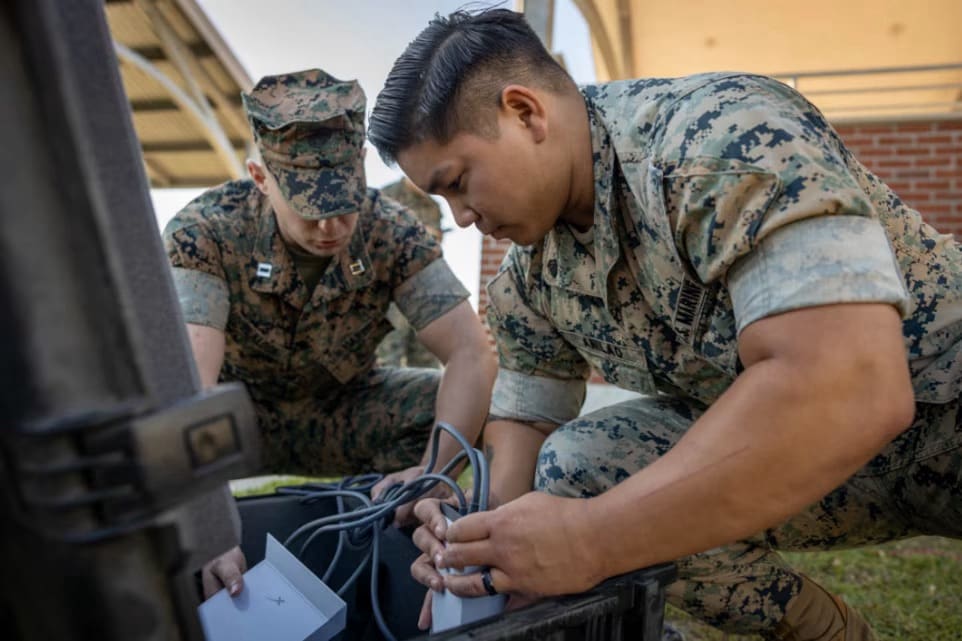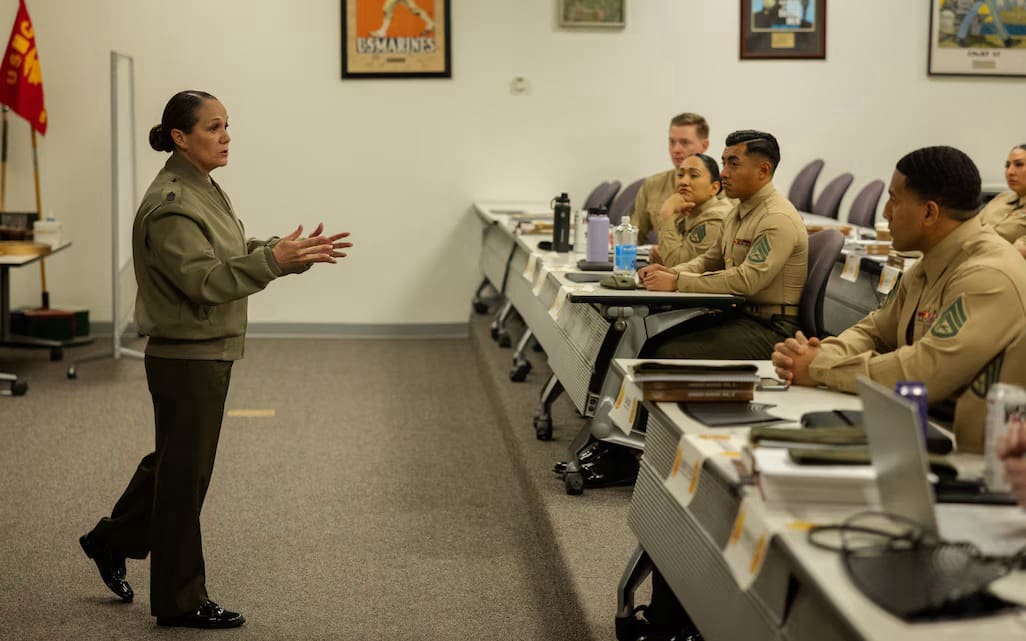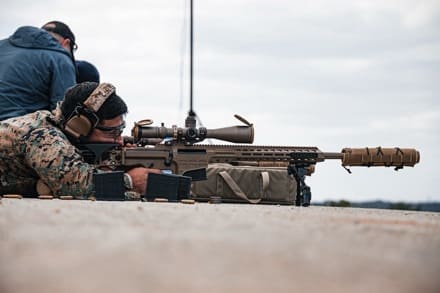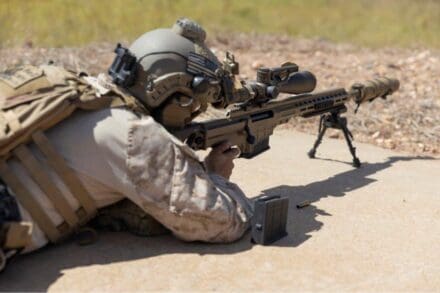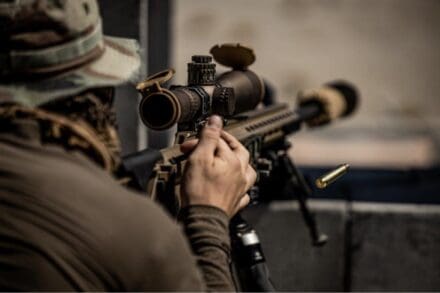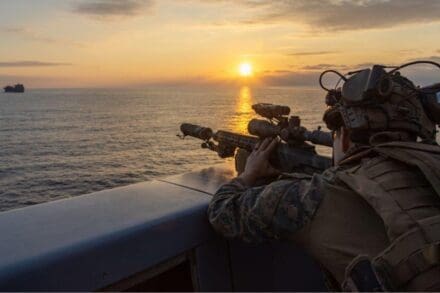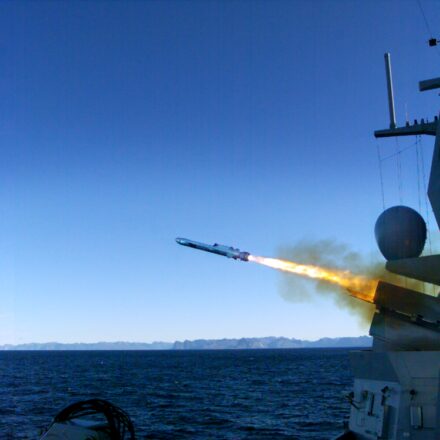Marine Corps Base Quantico, Va. —
As the world enters an era of renewed great power competition, the Marine Corps is rapidly modernizing to meet the challenges of the modern battlefield.
Envisioning a return to contested littorals, Marine Corps Systems Command’s PM Combat Support Systems is fielding cutting-edge expeditionary medical capabilities designed to increase warfighter survivability behind enemy lines. Guided by Force Design, the Expeditionary Medical Systems team is rapidly deploying these advanced medical capabilities to ensure Marines are prepared for the future fight.
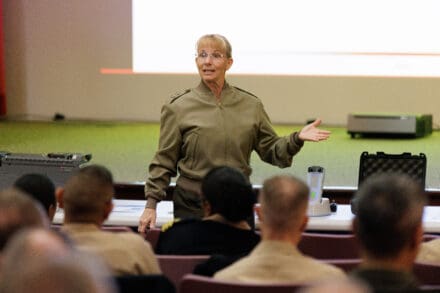
According to Navy CAPT Janine Espinal, EMS team lead and senior medical logistician: “These capabilities not only ensure we can sustain operations by providing life-saving care under fire, but also enhance survivability in Expeditionary Advanced Base Operations (EABO) environments, where rapid, adaptive medical support is essential to keeping Marines in the fight.”
Medicine Under Fire: A Battlefield Perspective
To envision these capabilities in action, consider this hypothetical scenario where Marines rely on expeditionary medical systems in a contested battlespace. The following situation report demonstrates how these tools would be employed behind enemy lines.
Situation Report
Location: Undisclosed, first island chain, INDOPACOM
Date: November 10, 20XX
Time: 1300 Hours
In the oppressive humidity of the Indo-Pacific’s contested littorals, a Marine platoon holds a critical position on a remote, undisclosed island—far from resupply or reinforcements. While the jungle provides natural cover, their advanced uniforms render them invisible, hidden from infrared and electromagnetic detection. To enemy sensors, they are phantoms—the ghosts of Devil Dogs past, returning to the theater where legends like GySgt John Basilone and LtGen “Chesty” Puller carved their legacy in blood and fire.
At a remote Expeditionary Advanced Base, a young Lance Corporal leans against a Joint Light Tactical Vehicle (JLTV), enjoying his favorite MRE. In this unforgiving battlespace, the chili mac is worth its weight in gold. Concealed by cutting-edge camouflage netting, the vehicle blends into the jungle, virtually invisible thanks to multi-spectral protection. Its rugged design powers through tough terrain, while the CASEVAC kit ensures it can be rapidly reconfigured to evacuate injured Marines from the front lines.
As the Marines advance through the dense jungle, they suddenly come under intense enemy fire. One Marine is wounded, requiring an immediate casualty evacuation to save his life. His squad lays down a heavy base of fire, enabling the vehicle to break contact and rush him to a concealed medical station. A Navy Corpsman, equipped with Damage Control Resuscitation (DCR) and Surgery (DCS) systems, quickly stabilizes the Marine. Portable refrigeration units keep life-saving blood on-site, ensuring critical care despite the distance from the ambush. Deep behind enemy lines, these expeditionary capabilities are a lifeline, enabling warfighters to survive and bring the fight tonight.
Although fictional, the scenario described is a close reflection of what our Marines are preparing to face on the future battlefield. To fight and win across the globe’s contested littorals, Marines need rapid, adaptive medical capabilities that enhance survivability when evacuation isn’t an option.
As noted by CMDR David Gribben, branch head for the Naval Support Branch at CD&I, “Our focus must be to ensure that our logistics approach is perfectly aligned with the Marines. As they get lighter and more agile, we’re doing the same with our medical capabilities. We’re matching their mobility with light, portable systems—shelter, communications, medical equipment—that integrate seamlessly with the Marine Corps’ logistics framework. This interoperability allows us to rapidly deploy and support Marines in contested environments, giving them the best chance of survival in the most austere conditions.”
Fielding Expeditionary Survivability
To address these challenges head-on, PM CSS’s Expeditionary Medical Systems Team recently hosted the Health Services Operational Advisory Group (HSOAG) at Marine Corps Base Quantico, Va., bringing together senior medical leaders from Okinawa, Hawaii, Germany and various CONUS and OCONUS locations. Over four days, Marines, greenside Navy medical personnel, and civilian acquisition professionals evaluated healthcare systems and structures, focusing on evolving capabilities to meet Force Design requirements.
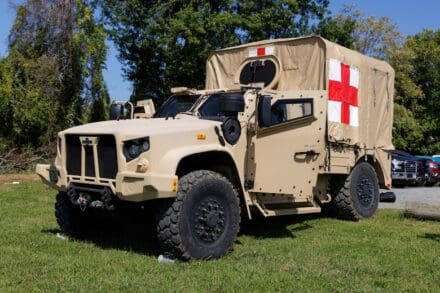
During the HSOAG meeting, standing before a JLTV fitted with the latest CASEVAC kit, Rear Adm. Pamela Miller, Medical Officer of the Marine Corps, highlighted the critical importance expeditionary medical capabilities in 21st century warfare.
She noted: “The development of our medical capabilities is crucial because we need to stay relevant, preparing for future conflicts rather than the last. We’re facing new challenges not seen since World War II, and there’s urgency to adapt to meet the Commandant’s directive, Force Design, and work with the naval enterprise through Distributed Maritime Operations. With Fleet Health Services and Bureau of Medicine and Surgery leadership here, we’re aligning our focus to ensure we can support the warfighters in the next fight.”
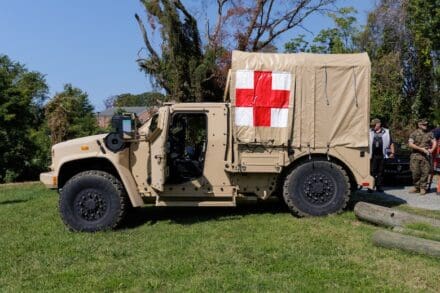
Throughout the week, several key medical capabilities were highlighted, starting with the JLTV CASEVAC Kit, a crucial modification to the JLTV Utility variant. This system allows for the rapid transport of two litters and a jump seat in the cargo bed, enhancing casualty evacuation in austere, contested environments. Its adaptability supports operational flexibility on the battlefield, as emphasized by Rear Adm. Miller, who noted its vital role in boosting casualty evacuation capabilities and maintaining force lethality. According to Capt. James Minturn, JLTV project officer at PEO Land Systems, the flexibility provided by the CASEVAC kit is a key advantage in contested environments.
In his words: “The JLTV gives commanders options. They can use it for troop transport one moment, then quickly switch to casualty evacuation when needed. Instead of dedicating a vehicle solely to medical transport, the CASEVAC kit lets units adapt on the fly, which is critical in environments where vehicle movement is restricted. It’s all about maximizing capability without overcommitting resources.”
The Expeditionary Portable Oxygen Generation System (EPOGS) was another standout, offering a lightweight, mobile solution for delivering medical-grade oxygen. EPOGS improves reliability, mobility, and ease of transport, making it essential for forward-deployed operations in challenging environments.
Additionally, the Expeditionary Medical Refrigeration Unit (EMRU) provides extended cooling for critical medical supplies such as blood, vaccines, and medications, maintaining temperatures for over three days without external power. This capability significantly outpaces older systems, which had an eight-hour limitation.
Finally, the Damage Control Resuscitation (DCR) and Damage Control Surgery (DCS) systems were highlighted for their compact, modular designs, enabling life-saving trauma care near the front lines in contested environments. These scalable systems ensure critical care reaches Marines even when evacuation is delayed, aligning with the Corps’ focus on distributed operations and survivability behind enemy lines.
Anticipating the Future Fight
In the race to 2027, PM CSS’s Expeditionary Medical Systems team is advancing critical capabilities that enhance battlefield survivability for the Marine Corps, the Joint Force, and our international partners. Systems like the JLTV CASEVAC Kit, advanced refrigeration, and portable oxygen generation are essential for delivering timely medical support in contested environments. These innovations, backed by rapid acquisition processes, ensure operational readiness in the most challenging conditions.
Tested in exercises like Global Medic 2024 and proven in real-world conflictssuch as Russia’s invasion of Ukraine, these expeditionary medical capabilities are critical for the future fight. Mobile medical units, damage control surgery, and forward-positioned resuscitative care have demonstrated their ability to reduce preventable deaths and maintain force lethality under fire. As these capabilities continue to evolve, they will remain essential in ensuring rapid response and adaptability in contested environments. By prioritizing joint collaboration and acquisition speed, PM CSS’ EMS team is setting the standard for medical readiness and ensuring our warfighters are equipped for success in an ever-evolving battlespace.
By Johannes Schmidt, MCSC Office of Public Affairs and Communication, Marine Corps Systems Command
Photos by Jim Van Meer


